Text by Mary L. Peachin with photos by Mary and Suzie Peachin
October, 2016 Vol. 21 No. 1
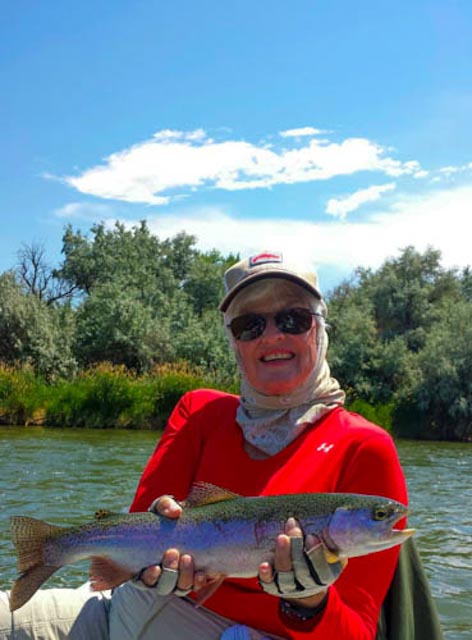 “Slack line is not your friend, in fact it is your enemy.” Drift fly fishing the Big Horn River, near the city of Thermopolis, Wyoming, veteran guide Chad Olsen, owner of Greater Yellowstone Flyfishing Outfitters, provided some requested coaching techniques.
“Slack line is not your friend, in fact it is your enemy.” Drift fly fishing the Big Horn River, near the city of Thermopolis, Wyoming, veteran guide Chad Olsen, owner of Greater Yellowstone Flyfishing Outfitters, provided some requested coaching techniques.
Putting in Chad’s thirteen foot inflatable rubber raft at Wedding of the Waters, the location where the Wind River changes its name to the Big Horn, we were guided down river by Chad’s oars.
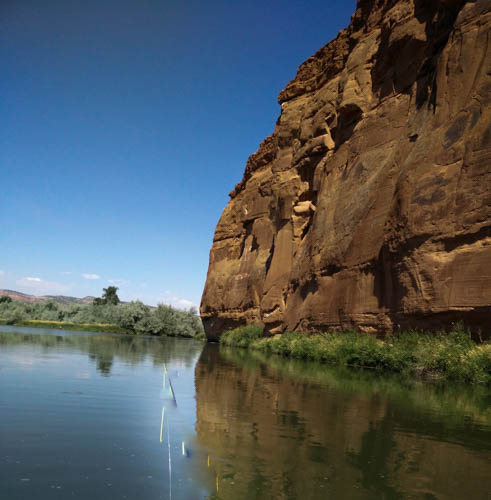
“Mary, remember to strip line slack before casting, and depending on current flow either mend downriver or upriver to prevent drag on your fly line. The angler in the bow fishes in front of the oars, the fisher in the stern fishes behind them.”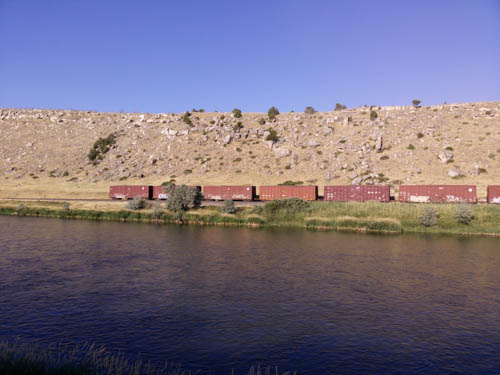 The Big Horn is a tail water fishery located on Wind River Canyon Native American reservation. Wedding of the Waters is the only location in the United States where a river changes names without a merging of two waterways. Stunning geology featured red sandstone cliffs seeping white sulphuric acid. A birders delight, we saw Redwing Blackbird, White Pelicans, Mallard and Merganser ducks, and a stately black and white Clark’s Grebe. Cliff Swallows nested in jug-shaped mud nests along the steep cliffs. Riverside wildlife included otter, muskrats, mink, plus domestic cattle and pig drinking river water. In addition to fisherman, the River attracts tubers and kayakers.
The Big Horn is a tail water fishery located on Wind River Canyon Native American reservation. Wedding of the Waters is the only location in the United States where a river changes names without a merging of two waterways. Stunning geology featured red sandstone cliffs seeping white sulphuric acid. A birders delight, we saw Redwing Blackbird, White Pelicans, Mallard and Merganser ducks, and a stately black and white Clark’s Grebe. Cliff Swallows nested in jug-shaped mud nests along the steep cliffs. Riverside wildlife included otter, muskrats, mink, plus domestic cattle and pig drinking river water. In addition to fisherman, the River attracts tubers and kayakers.
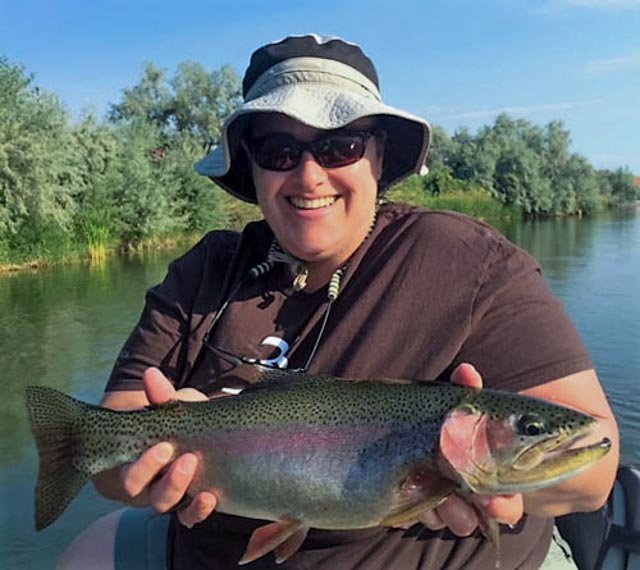 Three of the Peachin family, David, Suzie, and Mary also fished with Cody guide Nate Crookshank who oared a low profile drift boat. Our take out at Hot Springs National Park was a drift of approximately eight to nine river miles.
Three of the Peachin family, David, Suzie, and Mary also fished with Cody guide Nate Crookshank who oared a low profile drift boat. Our take out at Hot Springs National Park was a drift of approximately eight to nine river miles.
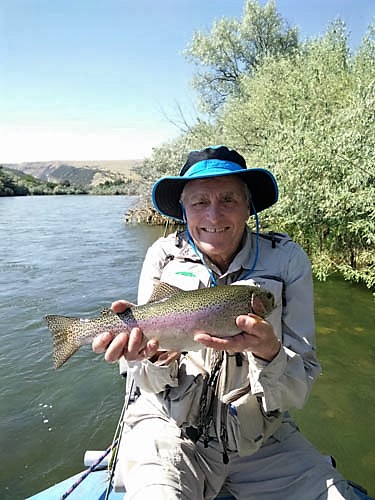
A major attraction of Thermopolis, Hot Springs State Park was “built around the world’s largest single mineral hot spring.” It is said that Big Spring releases approximately four million gallons of mineral water daily at 135 degrees Fahrenheit. A fountain forms a caldron channeling water into pools to be cooled before being piped into public pools. A second stream flows over Rainbow Terrace before spilling into the Big Horn River. A herd of buffalo roams the red hills behind the main portion of Hot Springs State Park.

The next day we drove an hour and a half north to Cody to float the North Fork of the Shoshone. Drifting south of the reservoir on the River’s main section through Shoshone National Forest near Buffalo Bill State Park, the River is adjacent to the northeast Wyoming Absaroka Range, and thirty five miles east of Yellowstone National Park.
 A free stone River, one create solely from snow melt, it is edged by steep palisade basalt cliffs as it flows through beautiful canyons with two-plus rated rapids.
A free stone River, one create solely from snow melt, it is edged by steep palisade basalt cliffs as it flows through beautiful canyons with two-plus rated rapids.
Tiger, brook trout, rainbow, cutthroat, and brown trout are targeted. South of Buffalo Bill Reservoir, the main part of the Shoshone, a tail water, the River is plentiful with multiple species of trout.

Both the Big Horn and Shoshone are off the beaten path, but both fisheries are well worth the effort with the quality, size, and variety of trout species. Geologically, it is beautiful country with interesting birdlife and wild life.
